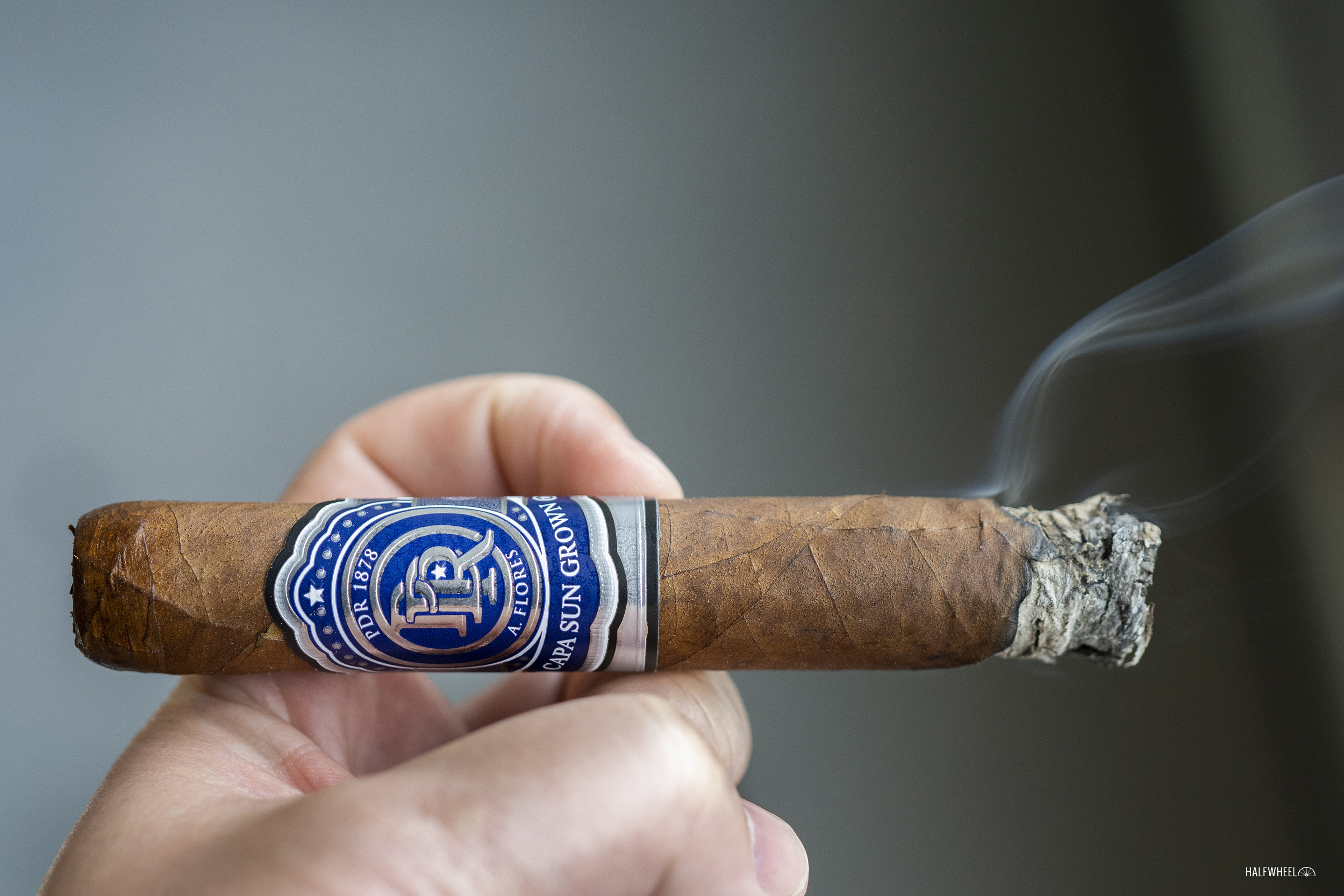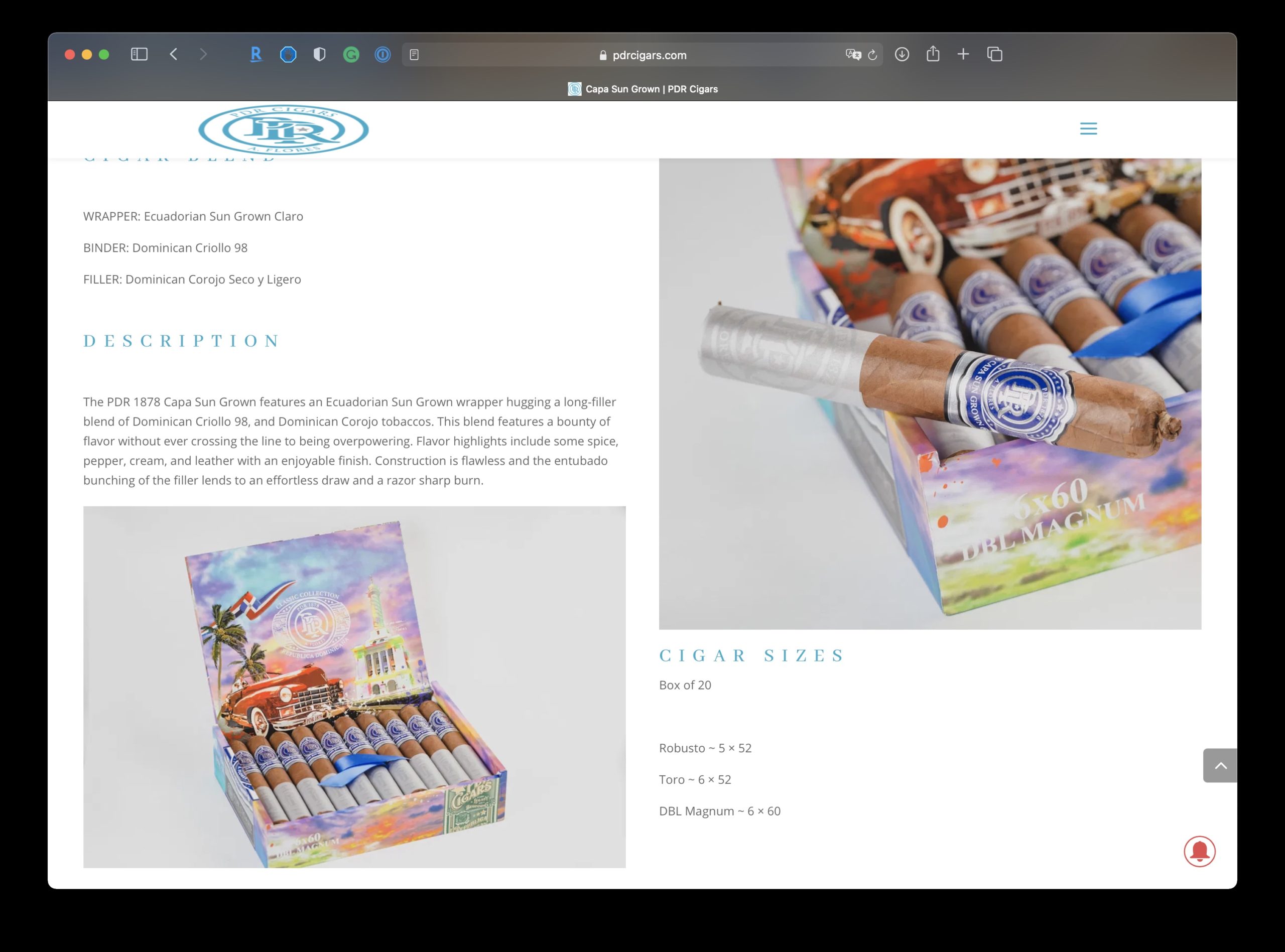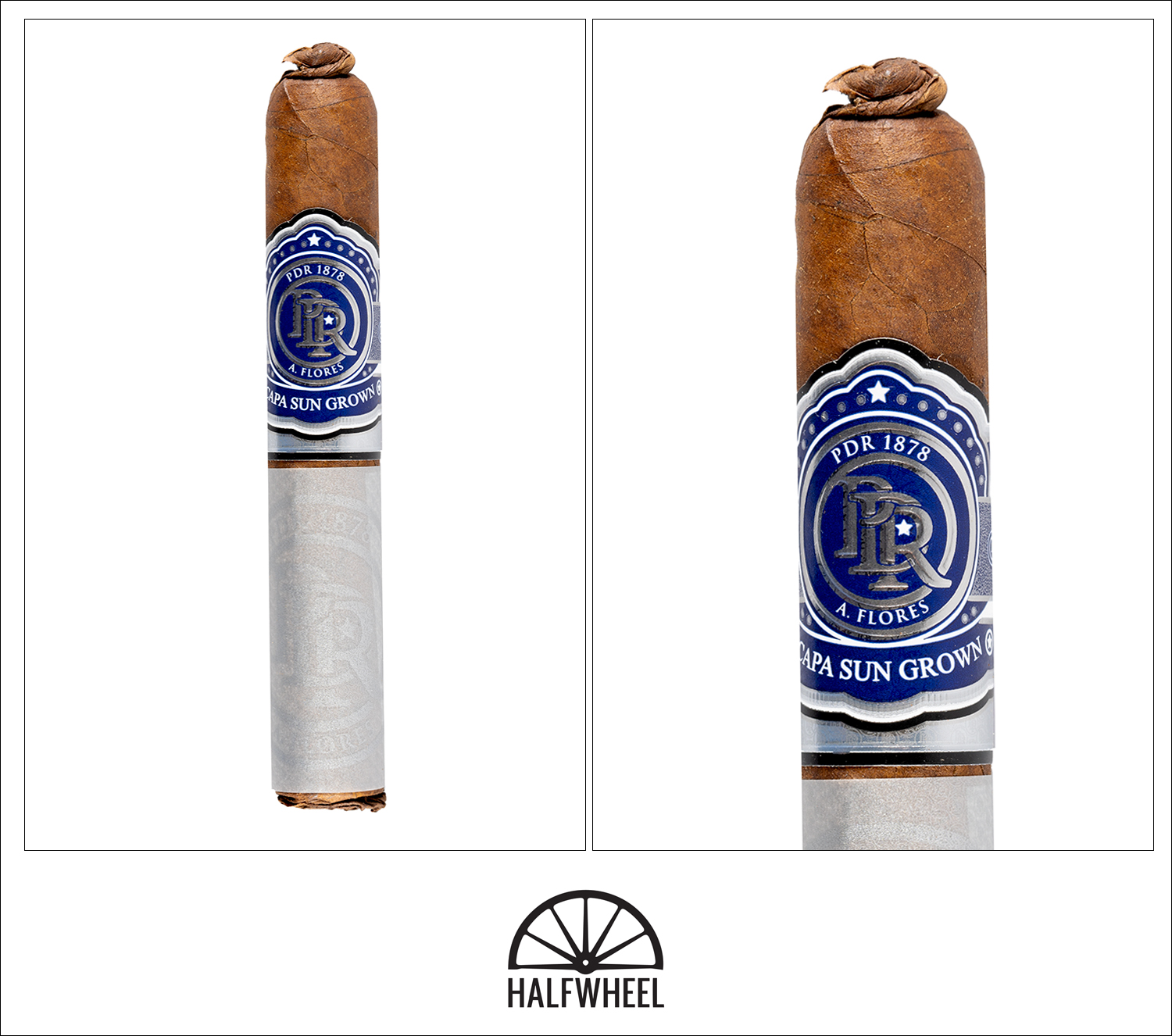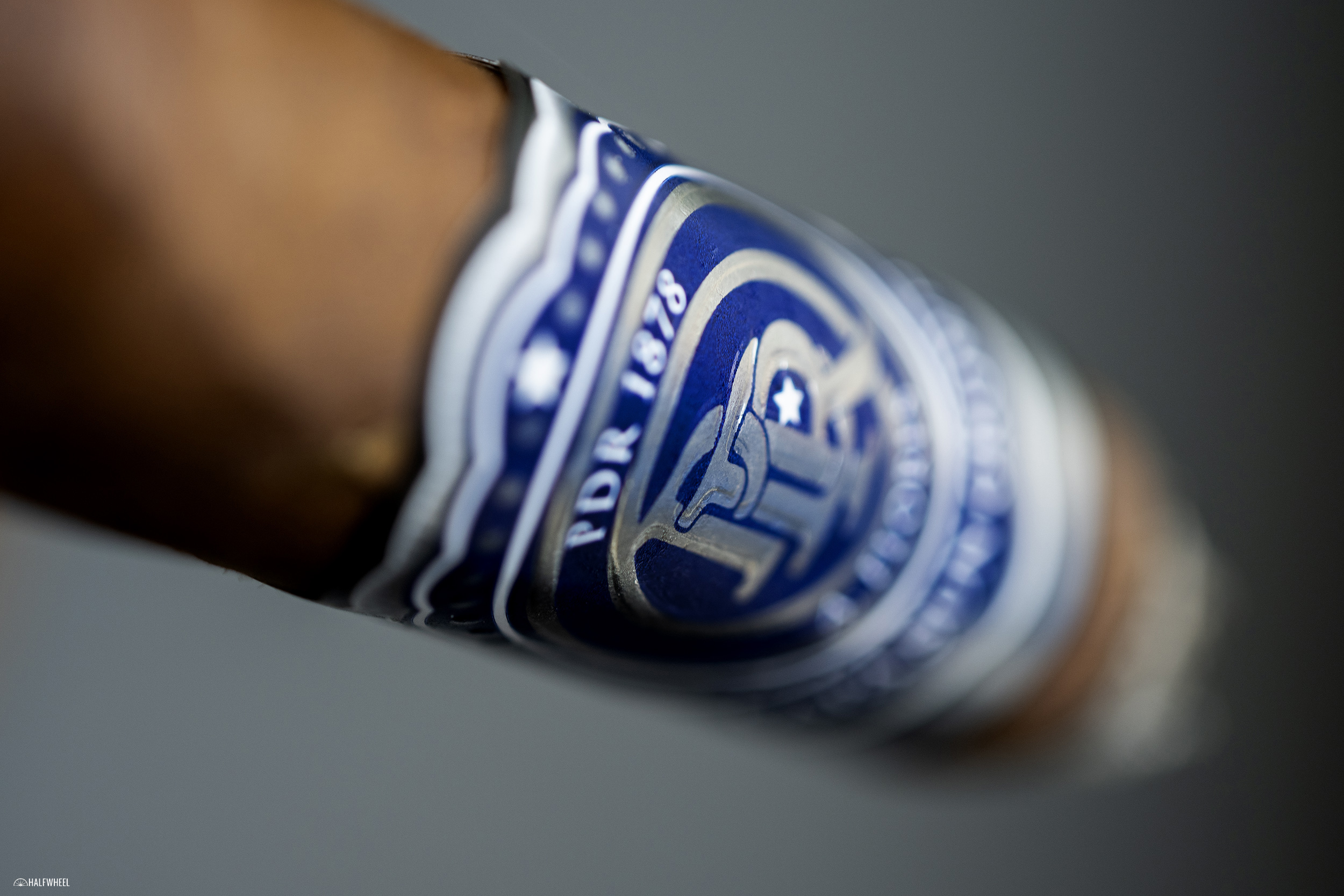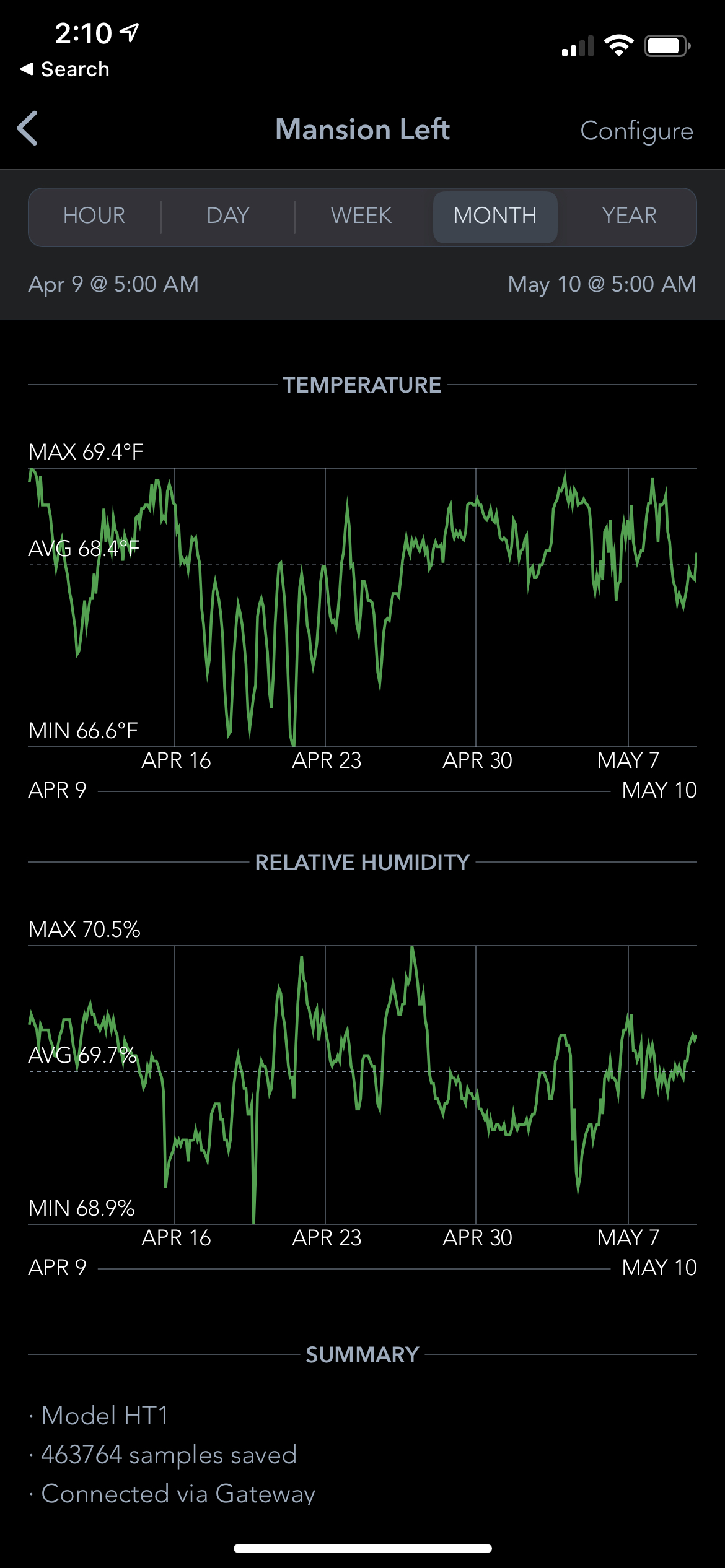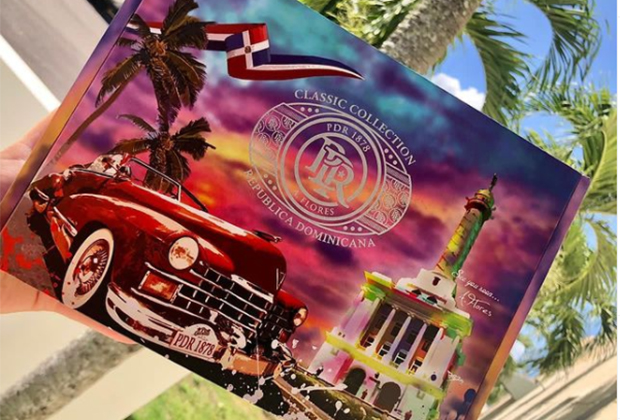On Saturday, we published a review of what I believed was the PDR 1878 Recordando a Santiago Capa Sun Grown Robusto.
As was mentioned in the review, I thought there was something off with the cigars that were smoked and wasn’t entirely sure what to do with the review. Ultimately, it was decided that the review—like nearly every other review we start—was going to get published. In the review, I pondered as to what might have caused the issues that I experienced with the cigar’s inability to stay lit.
While I explicitly wondered about the many issues the cigars had and how the issues might have been caused, I hadn’t considered another issue: PDR Cigars might have sent us the wrong product. After the review went up, Abe Flores, PDR’s founder, emailed halfwheel asking where we got the cigars (they were sent by PDR), telling us that they were the wrong cigars (odd), that they had been gotten wet, and asking us to remove the review.
The part that is interesting is that Flores says the cigars we were sent were actually the older PDR 1878s, which have different boxes and slightly different secondary bands. Complicating matters is that the cigars were sent to us in the new box and with a letter describing the new versions, so it never occurred to any of us that PDR might have sent us the “wrong” cigars.
Above is one of the images sent by Flores showing what the new version of the cigars should look like. As you can see, the difference in the secondary band is obvious.
As it turns out, it never crossed my mind these were the wrong cigars because all of the images of the “new” cigars more or less looked like the ones I received. This news story covering the cigar in December showed the same secondary bands I saw. If you type in “PDR 1878 Recordando” in Google Images, you will find no results showing the metallic secondary band Flores says should be on the cigar, only the older packaging, including (currently) on the PDR Cigars’ website.
The only difference is the size in the secondary band, though many of those product shots are of the 6 x 60 vitola, whereas I reviewed the Robusto.
As was mentioned in the review, we are no longer accepting free samples for review, which will hopefully avoid as many review-related issues as possible going forward.
Brooks, Patrick and I have spent ample amounts of our weekends discussing what to do with this review. We are certainly willing to publish reviews of cigars that have issues, there are many cigars that have scored worse than this PDR. However, publishing a review of product X and then being told we reviewed a different product is not okay. In fact, the last time we removed a published review—over three years ago—was for the same reason.
So, when faced with the option of leaving the review up or taking it down, I suggested we do both. The review has been removed from its original URL and will no longer be listed as a review in our navigation system and elsewhere. However, in the interest of transparency, the review is published, in its original form, below.
I’m still not entirely sure what I smoked or didn’t smoke, but I’m not sure it matters in terms of whether the review gets to count as “a review.” While it’s a bit complicated to explain, the decision—at least on my end—was made to take down the original review not because of the issues with the burn or the score, rather, that we aren’t sure what I actually smoked.
This is the full review, in its original form:
Late in 2020, PDR Cigars announced that its longtime PDR 1878 line would be going through a major rebrand.
First, the brand is now known as the PDR 1878 Recordando a Santiago. The name is a reference to Santiago de los Caballeros, the Dominican city that is home to most of the country’s cigar factories. Second, PDR’s Abe Flores worked with Fabian Barrantes to redo the packaging for the brand, which now features colorful boxes that depict a classic car and the Monumento a los Héroes de la Restauración, a famous monument in Santiago.
Most importantly, the four different blends that make up the various lines have been reblended.
- The Capa Natural uses a shade-grown Ecuadorian Connecticut wrapper with Dominican criollo 98 making up the binder and filler.
- The Capa Oscura gets its dark oscuro wrapper from Ecuador as well, while the binder is a Dominican habano seed leaf and the filler is Dominican corojo.
- The Capa Sun Grown’s wrapper also comes from Ecuador, while the binder is Dominican criollo 98 and the filler is Dominican criollo.
- The Capa Madura uses a Mexican San Andrés wrapper, while the binder and filler are Dominican criollo 98.
Finally, the blends are now offered in just three sizes—5 x 52 robusto, 6 x 52 toro, 6 x 60 magnum—instead of the previous six vitolas.
The name, Recordando a Santiago, translates to “remembering Santiago.” As part of that concept, Flores said that PDR Cigars intends on making 5,000 boxes per cigar per year until regular travel to Santiago resumes, which he predicted last December wouldn’t take place until 2023.
- Cigar Reviewed: PDR 1878 Recordando a Santiago Capa Sun Grown Robusto
- Country of Origin: Dominican Republic
- Factory: PDR Cigars
- Wrapper: Ecuador
- Binder: Dominican Republic (Criollo 98)
- Filler: Dominican Republic (Criollo)
- Length: 5 Inches
- Ring Gauge: 50
- Vitola: Robusto
- MSRP: $6.41 (Box of 20, $128.20)
- Release Date: December 2020
- Number of Cigars Released: Regular Production
- Number of Cigars Smoked For Review: 3
This is one of those cigars where very little of the wrapper is visible thanks to both a large band and a large piece of paper that covers the bottom half of the cigar. There’s a very noticeable pigtail on the top of the cigar, one of the more detailed ones that coils around the caps. All three cigars that I smoke struggle to get out of the paper, which seems to have been applied before the cigars absorbed more humidity because it’s very tight. One of them is so tight that I couldn’t easily remove it by tearing the paper and so I opt to just cut a piece with my knife and then tear the rest of it off. Once out of the paper, I smell the sun grown wrapper and find a mild sensation of some sugary sweetness, akin to a bag of gum balls. While that’s a bit odd, the covered foot has an even stronger version of that smell and if I didn’t know any better, I’d expect this cigar to be flavored. It reminds me of the Method brand of wood polish that we use, which is a sweet artificial almond flavor. The cold draws are predictably sweet with a mixture of the candy flavor from before, some of the sweet and almonds and a fair bit of herbal flavors.
Flavor-wise, the PDR 1878 Recordando a Santiago Capa Sun Grown begins with a more common sweetness over mild amounts of cedar and toasty flavors. Unfortunately, while I tried lighting the cigar, it’s mostly not lit. While the covered foot is lit, it doesn’t seem to be igniting much of the tobacco underneath it—or above it if you think about the cigar from a vertical perspective—and that means the smoke going up the body of the cigar is declining quickly. I can both feel and see this happening and grab my lighter to address this, which takes a couple of attempts. That was the first cigar I smoked for this review, which means that for the second cigar I have some idea as to what to expect, I take my lighter and spend an extra minute or so making sure that not only is the covered foot evenly lit, but that there are other parts of the foot that are starting to ignite. While it’s better, it doesn’t avoid the part of the process where I’m touching up the cigar a couple of minutes after lighting. For the third sample, I decide to grab a triple flame torch, which helps but still doesn’t avoid the issue. Flavor-wise, the 1878 has lots of flavors that are reminiscent of a freshly chopped tree, there’s some nuttiness and a weird water flavor. One sample I write down “chlorine water,” but I actually think it’s more akin to what happens to mineral water when it’s been out for a few days. Regardless, the PDR finishes with nuttiness, grassiness, sawdust, a touch of bitterness, and some more of that weird water flavor. Retrohales have sawdust, grassiness, charcoal and a semis-sweet fruitiness. The retrohales finish with fruitiness, white pepper, nuttiness and earthiness. Flavor is medium-full, body is medium-full and strength is medium. Each cigar needs two touch-ups, one to address the issues at the start and another one to help with an uneven burn after an inch or so.
Around the halfway mark of each cigar, things just fall apart, sometimes literally. For a little while, the profile holds itself together. There’s an increase in something burning my palate—it seems more pepper than spiciness—and an uptick in the weird mineral water flavor along with some saltine crackers. The finish transforms into a mixture of the water flavor and creaminess, with the pepper sort of lingering. Retrohales become increasingly difficult because of the combustion issues, which is basically all I’m going to talk about for the remainder of the review. At some point before the middle point of the cigar—about an hour in for me—it just decides to stop burning. I am puffing along and then I can feel the smoke production drop. I take another quick puff, it’s still declining, another puff, still in decline, and then I touch up the cigar before it goes completely out. A few minutes of toastier flavors go by: smoke production feels weaker, a quick puff, less smoke, another quick smoke, less smoke; another touch-up. This process just keeps repeating itself, but each time the starting point is with less smoke than before. Eventually, the ash turns black, and not specs of black, but just a rim of black ash.
There are a lot of parts of this black ash that are weird. For one, it doesn’t appear that the filler is actually burning; it’s basically just getting lit on fire and then going out, kind of like a wet log. I can tell it’s not burning because if I rotate the cigars there are various pieces of the filler that are still brown. Furthermore, after I do one of these touch-ups, there’s a diminishing amount of smoke coming from both ends of the cigar and even 30 seconds after using the lighter, I can touch the ash and most of it is just warm. I try knocking off the ash normally, that doesn’t work, so instead, I find myself scraping it on the sides of the ashtray. Eventually, I cut one of the cigars at the bottom, removing the ash build-up, to see if that can avoid the issue, but none of it works. I should point out that at this point, the flavor profile is increasingly worse thanks to a generic bitter toasty profile that also has some very sharp aspects. I end up not making flavor notes in the second and final thirds of the first cigar outside of writing “toasty relight mess.” The second cigar gets a few more words, but not much. And I didn’t really experience much of the final third of the final cigar because I ended up taking it apart, which you can see below.
Final Notes
- These cigars were smoked at the end of April, most of the review was finished in May, but I haven’t been terribly motivated to complete this review, which is one of the reasons why it ended up being so delayed.
- We’ve long had a policy at halfwheel: once we start the review process, meaning that a reviewer smokes the first sample, we try to finish the review. No matter how good or bad the cigar is, no matter how long it takes, no matter how little information we have about the cigar—we want to publish the reviews. There are a few times in which we’ve stopped, but it’s pretty rare and hasn’t really more than maybe once per year until this year. A few months ago, we made a decision to stop reviewing prerelease samples of cigars and there were a few cigars that sort of fell through the cracks where we realized after the reviews were written—but not published—that the cigars we based the review on were sent to us before the reviews were published, those reviews were scrapped though we plan on having other people review them in the future.
- I bring all this up because we had lengthy internal discussions about this review. It wasn’t because we were concerned about how low the score was going to be—I still actually don’t know as I write this—but as you will read below, I’m not sure how useful this review is because of all of the issues and because these issues seem really bizarre and unique. It almost feels like a low blow targeted at PDR, which isn’t the intent at all. I haven’t spoken to anyone at PDR about this review but I imagine they’re not going to be happy and that’s unfortunate because that’s not my intent, it’s actually never my intent.
- All of us were seemingly on the fence: we respect the longstanding policy that we have and don’t like deviating from it under just about any circumstance, but this review seemed unnecessary and unhelpful. Ultimately, the policy exists for a reason and it’s only as good as our adherence to it, so this review gets published even if there aren’t really tasting notes for the second half of this cigar.
- There were a lot of construction issues with the cigars I smoked for this review, to the point where I’m not sure how many of them are relevant. It’s kind of like going to a car dealership to look at a specific car and then showing up to find out that it doesn’t have wheels. At that point you are probably: a. curious as to how this happened; b. not going to buy the car under just about any circumstances. In the spirit of answering the curiosity, I’ll describe them.
- One thing you should know before reading anything else is that up until around the halfway mark, the cigars were fine. They weren’t great, they were below average in comparison to the types of cigars we review, but they weren’t awful. The second half of the cigar was basically not smokeable. While I still don’t understand what caused the issues, looking back on it, there were some signs this was going to be a problem.
- On one sample it was physically challenging to remove the paper covering the bottom half of the cigar because the cigar was so tightly packed it was passing into the paper. Once I tore the first bit off I could hear some cracking—though it doesn’t appear that was related to the wrapper—and proceeded to then take my time.
- Once the paper was removed, it was pretty obvious the cigar had expanded quite a bit since the paper was applied. That means that the humidity was likely increased after packaging. This could have been at the factory while it was waiting to leave, in transit from the factory to the warehouse, at a port, at the warehouse itself or in transit to us. We don’t take pictures of how every cigar arrives at our office, but it would appear these were shipped to us on April 7 and arrived at the office on April 9, meaning it seems unlikely the humidity issue took place during that part of the process.
- For those of you that are curious, here’s what the humidity in the humidor the cigars were stored in was for the time they were stored.
- I think it’s also worth repeating that the cigars wouldn’t ignite normally from the start. Whenever I see a cigar with a covered foot I know that I need to be more cognizant about making sure the cigar is fully lit, which makes sense if you think about the combustion dynamics of the individual parts of a cigar. While I’ve had some struggles, this was a different level of ignition issues. For the final cigar I smoked, I probably spent over two minutes with a triple flame torch, though not always with the lighter activated. But lighting, rotating the cigar, examining it, blowing on the foot to gauge the combustion, etc.
- The largest issue I had with these cigars is something that I don’t really understand enough to analyze with much authority. Around the halfway mark the cigars began requiring pretty constant relights or touch-ups. Not every 15 minutes, more like every five. Furthermore, the ash turned black. It’s not like a dark ash, it was black and largely black, not the ash with dark lines that many Cuban cigars have.
- That ash, if that’s even the right term, wasn’t hot. It was barely warm. And as you can see in the video above, it also wasn’t the entirety of the cigar. So I saw this vein that wasn’t burnt through and tried to tear a piece of the vein off, but because it wasn’t actually burnt, the full structure remained intact. That ended up tearing the cigar open, which led to an interesting—and predictable—result.
- The filler tobacco inside of this cigar was so moist, it felt like wrapper about to be rolled on a cigar. In fact, the filler tobacco that wasn’t burnt was more pliable than the wrapper on the cigar. Brooks Whittington didn’t believe me, so I took the pieces of the cigar, sealed them in a bag and he got to examine them the next morning. I will say that many lit cigars get pretty moist as they are lit, but this was a different level. I would point out that most cigars that are lit tend to have moist filler if you open them up, but this was very different.
- PDR sent us these cigars for review. It also sent each of the other three blends in the 1878 series. While I didn’t smoke them, I did inspect each of the other three, those seemed fine. I did take another of the PDR 1878 Recordando a Santiago Capa Sun Grown Robusto and put it in the HumiMeter. It registered 72 at the foot, 74 at the cap and as high as 78 in the middle of the cigar. I then opened that cigar up and found that some of the filler—but not most of it—was very moist.
- None of the cigars felt spongy, though all had draws that were a bit loose and the one cigar I opened up had a noticeable soft spot.
- I didn’t ask PDR about this because I try to avoid talking to companies when I’m in the process of reviewing their products. If I have factual questions, I’ll ask, but otherwise, I find that it’s just awkward.
- I’m not confident in any of my guesses as to what went wrong here, other than that I can’t really recall seeing this happen. My best theory is that it involves humidity in the cigar not leaving before the paper was added. I really wonder what would have happened if the cigar didn’t have a covered foot, as well as if the paper was never applied.
- This particular comment applies to the cigar world more broadly and not specifically to PDR: in my opinion, quality control mishaps are increasing in frequency.
- I’m somewhat confused if PDR will follow-through on its plan to stop selling this line once regular travel to the Dominican Republic resumes because that seems like it might happen by the end of this year, if not sooner.
- This is very much a cigar that seems to have all the options, sort of like a car configurator. I’ve seen this happen a lot at Drew Estate’s Cigar Safari, where people have the ability to create their own blends and even use unique sizes and features. It’s got a coiled pigtail, covered foot, large paper wrapping, etc.
- PDR Cigars sent cigars for this review. It actually caused us to reevaluate our policy about accepting review samples. Recently, we decided that the cigars used for reviews would only be cigars that were purchased. I believe there are one or two reviews that still need to get published that are based on cigars that were sent to us, but after that we are done.
- Final smoking time was about an hour to the point when the cigar stopped burning. If this wasn’t a cigar review, that would have been it for me. It took another 90 minutes—over two and a half hours total—to get to a point where I could take the picture you see in the final third and the video. It was not pleasant.
While you will know what the score is, as I wrote this I had no idea what the final number would be, but I do know it’s a lot higher than what I subjectively think about the three cigars I smoked. Most of the data points that lead to our final score our collected at each third, meaning that while the cigar basically got zero points for the final third—because it wasn’t really combustible, let alone smokeable—it did get a pretty decent allotment of points for the first third. Was it on track to get a 90+ rating? Probably not. But because the final third—or half—doesn’t detract from what happened in the first half of the cigar, the score is a lot better than my own frustrations.

